Goldfish East to West
The journey of the goldfish started in Eastern China, possibly beginning with the Prussian carp, Carassius gibelio.
Prussian carp, Carassius gibelio
Colored goldfish date from the Jin Dynasty (265-420AD) when the fish where farmed and mutated offspring were orange and yellow colors instead of the natural brown, green or bronze.
The mutations being highly colorful were thought to be beautiful fish. They were kept outside in ornamental ponds and for special occasions displayed indoors to be admired.
Contents
Indoor goldfish
Goldfish only began to be kept inside from about 1400-1600. Leading to more mutations of the fish, making them a less hardy fish used to being indoors.
Keeping them indoors meant that they were more likely to be seen side-on and not from above as would be the case outdoors in a pond or watergarden. This changed our view on what was the most desirable feature of the fish.
This change lead to the development of different popular varieties, such as telescope eyes, red caps and the calico coloration. Goldfish were now popular, no longer only for Royalty and the rich. As time went on, they became more common, reducing their value, cost and status.
In Japan, breeding programmes were set up to develop their ornamental goldfish such as the Japanese ranchu, tosakin, jinlcin, nanlcin and ryukin fish.
American Goldfish
In mid-to-late 1800’s goldfish entered North America and became popular. The first goldfish farm was set-up in Maryland, using Chinese fish strains. The only new variety added by American breeders was the Comet.
Goldfish have been a victim of their own success
Being hardy and easy to breed they became a common fish for indoors, losing their original regal exclusivity. Being seen as a cheap pet, apparently easy to keep, bright attractive colors and shape increased its popularity and shrunk their cost. But what was the price for this successful breeding and promotion?
Inexperienced owners had a cheap commodity that they could easily replace if it died and without a lot of empathy for their new pet fish – the common perception of goldfish don’t just stem from a low replacement value. What were these fallacies – the age-old myth they have a three-second memory, only grow to the size of their tank, and of course don’t feel pain, and a major mistake for any aquarist – they thrive in untreated tap water. We know that the water condition is a major consideration…..water hardness article here.
Glass Bowls Mistake
The Europeans and Americans started keeping them in small glass bowls – mistakenly believing that the Chinese did this, based on the Chinese custom of showing off their fish indoors in clay pots for important visitors and then returning them to their outdoor ponds after the great exhibition impressed their guests.
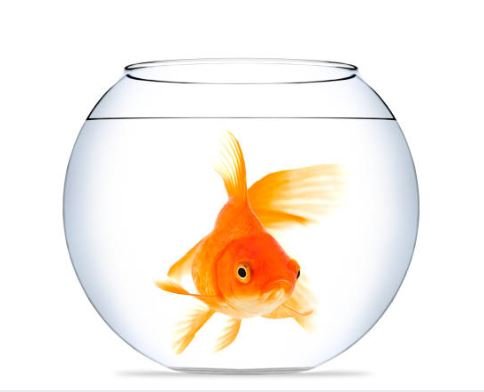 Small glass bowls with little water and no filtration lead to a build-up of waste and hormones that seriously harm health, growth and vitality. Often killing the goldfish.
Small glass bowls with little water and no filtration lead to a build-up of waste and hormones that seriously harm health, growth and vitality. Often killing the goldfish.
The use of small traditional bowl has greatly reduced over the past 15 years. Unfortunately, there are still businesses manufacturing undersized aquariums for keeping goldfish.
It is very important to provide the right size tank for goldfish – normally at least 25 Gallons.
Problems caused by breeding mutant goldfish
I don’t want to put anyone off goldfish, but there a few issues that you should at least know about.
Compact Bodies
Fancies have short compact bodies – this causes buoyancy issues. Their internal organs are squashed into their abdominal cavity; so after feeding their gut tract swells, which then pushes against the swim bladder and it causes balance problems.
Standard goldfish are quick and agile, but mutant fancies with curved shortened spines make them slow and unsteady swimmers. A compact shape hinders fancy goldfish varieties.
Fin Shape
Some older fancy fish develop dorsal fin bend as they grow larger. This can be because of poor conditions and diet but it may also be that their fins are too large for their bones to support. The weight of large finnage can also cause weird bobbing clumsy movement.
Head Growth
Oranda and Ranchu and varieties that have large head growth (the hood or ‘wen’) can be seen toppling on their sides when searching for food, thought to be due to the weight of the growth pulling them over on their side.
Long life – long tank
In the right conditions, fancy goldfish can live a long and healthy life in fish tanks. 20 years plus is certainly a possibility although 8-15 years is typical. So what are the right conditions to ensure along life for your fish. In simple terms, a large aquarium is very important.
Considering that an Ryukin can grow to a length of 10-12 inches (30cm), as can an Oranda, these fish really need a tank of about 2 feet (60cm) in height and width (front to back) for adult fish.
Other goldfish varieties may not grow so big. For example, Pearlscales are generally smaller, usually about 6 inches (15cm) — but they can grow longer to about 10 inches or so (25cm).
A good size tank, a long tank is best, say 60 inches long (150cm) for mature fish.
An aquarium of 60in x 24in x 24in (150x60x60cm) (120 Gallon Aquarium) could house a group of four to six adult fancy goldfish.
Why so big, well let’s consider how they move and remember they need to avoid rough surfaces and sharp objects to prevent collision damage. Don’t forget you don’t want them getting stuck between the various items in your tank like ornaments, filters and any other equipment.
What do Goldfish like to eat
Goldfish were originally omnivores, eating worms, insect larvae, crustaceans, algae and high-fibre plant material.
A basic diet of flakes and pellets, with some live or frozen feeds, plus vegetable matter like flaked peas and blanched spinach is ideal for the standard goldfish – they are not really that fussy about what they eat. However, fancy goldfish are not so easy to feed as they suffer from the short body problems and related buoyancy issues which can be exasperated by their food.
Goldfish are not grain eaters. When selecting good quality food for your goldfish you should avoid wheat, corn, rice or soy products in the first 3 ingredients – ideally none at all. They can’t digest complex carbs like these used as fillers.
Goldfish get constipation. Any roughage will help them digest their food better. Crushed peas and Daphnia (live or frozen) can help the blockage. A diet rich in greenery such as dandelions, peas, blanched spinach and nettles is good. It must be easily digested.
Typical ingredients in gel foods that are good for goldfish: Krill Meal, Spirulina Algae, Black Soldier Fly Larvae Meal, Chlorella Algae, Squid Meal, Dandelion Leaf, Seaweed Meal, Whole Egg, Pea Protein Isolate, Rice Protein Concentrate, Banana Powder, Brewer’s Dried Yeast, Mussel Meal, Mango Powder, Lecithin, Locust Bean Gum, Citric Acid, Stinging Nettle, Garlic, Ginger, Cinnamon, Dried Kelp, Phaffia Yeast, Dried Watermelon, RoseHips, Hibiscus Flower, Marigold Flower, Paprika, Turmeric, Salt, Calcium Propionate and Potassium Sorbate.
[FreshBundle bundle_id=”goldfish_food_001″ layout=”grid” columns=”2″ custom_title=”Goldfish Flakes” title_fontfamily=”Open Sans” custom_title_font=”20″ custom_buy_button=”” button_styles=”button_style1″ button_color=”” custom_cta=”” target=”current” box_border=”border_style2″ border_color=”#ea820b” custom_bgcolor=”#ffffff” header_image=”” ]
Sand, gravel, choking and filtration
Sand is good, gravel is bad. Simple.
Apart from actually choking your fish to death with gravel you might be lucky and only have a large bill for an expert removing coarse gravel from its mouth – do not use course gravel with goldfish. Fine gravel may pass through the gills but even if it does it may cause harm to their delicate gill filaments.
Clearly they are not going to choke on large pebbles or stones, but these can create another problem in that waste can build up under them. A reverse-flow under gravel filter system can help with this. These used to be plates on the base of the tank that had air pushing up, but this created a mess. Nowadays the water is forced down through the plate, usually by an external canister filter which can then filter it.
Using an external canister filter with a long spray bar disperses the flow and gives a lot of surface movement too. I would recommend an external canister instead of an internal canister for goldfish. An internal one doesn’t have enough filter media in them to deal with messy goldfish and the flow can be too strong for the fancies.
Other filters you can use are ‘Hang on the back’ as a good option, having lots of media and also large sump filters are perfect, but expensive and need a lot of space.
Types of Goldfish for Pond or Tank
POND: Standard bodied and single finned goldfish including:
Common goldfish, Comet, Jinkin, Sarasa, Shubunkin, Tamasaba, Wakin,
AQUARIUM: less hardy fancy goldfish including:
Bubble eyes, Butterfly, Celestial eye fancies, Fantail, Moors, Oranda, Pearlscales, Pompom, Ranchu, Ryukin, Telescope.
Glossary
Ryukin
The Ryukin is a short deep-bodied fancy goldfish with a characteristic hump in the shoulder region.
The ryukin is a hardy and attractive variety of goldfish with a pointed head and has a pronounced hump on the back behind the head. It may be long-finned or short-finned with either a triple or quadruple tail. The dorsal fin is high while the caudal fin is often twice as long as the body.
- Size: 6-10 inches (25cm)
- Lifespan: 10-15 years
- Type: Fancy
- Tank Set-Up: Freshwater, with some Plants
- Tankmates: Ryukins (Ryukins are semi-aggressive and are best if with its own kind)
- Minimum Tank Size: 30 Gallons
Oranda
An Oranda is a breed of goldfish characterized by a prominent bubble-like “hood” on the head. The head growth or hood may be a prominent growth on the top of the head or may encase the entire face except for the eyes and mouth. The headgrowth or hood (also known as wen or crown) may be a prominent growth on the top of the head (cranial region) or may encase the entire face except for the eyes and mouth.
- Size: Up to 10 inches (25cm)
- Lifespan: 15 years on average
- Type: Fancy
- Tank Set-Up: Freshwater, with some Plants
- Tankmates: Peaceful community fish, peppered catfish, leopard pleco or catfish from Ancistrus
- Minimum Tank Size: 25 Gallons
Pearlscale
The Pearlscale is a spherical-bodied fancy goldfish with doubled finnage similar to the fantail. The characteristic feature of the Pearlscale is its thick, domed scales with pearl-like appearance. Its body is round and similar to a golf ball. The finnage may be long or short. Pearlscales can reach up to 8 inches long and grow up as large as an orange.
- Size: 6-8 inches (20cm)
- Lifespan: 5-10 years
- Type: Fancy
- Tank Set-Up: Freshwater, with some Plants
- Tankmates: Bubble Eyes, Black Moors, Veiltails, Lionheads
- Minimum Tank Size: 25 Gallons
Thomas McCready is the co-founder of Technology Companies that developed many fish tank products such as aquarium heaters and pumps following his passion for keeping fish.
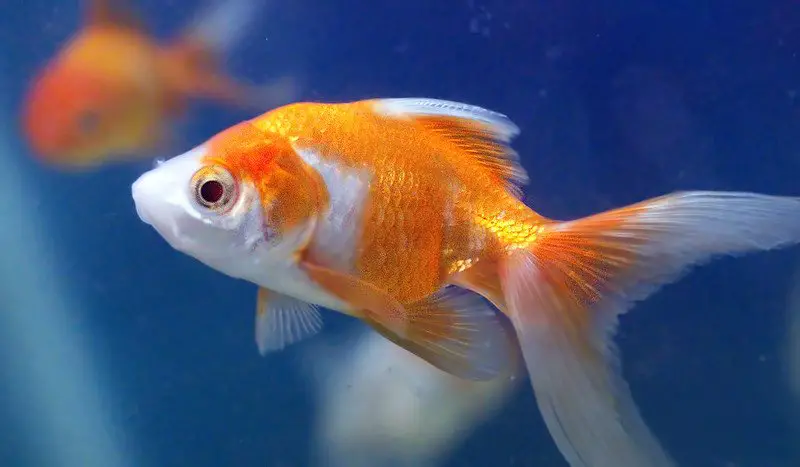
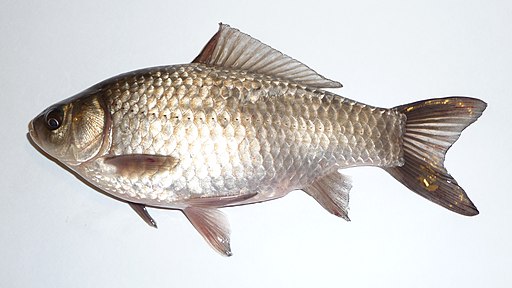

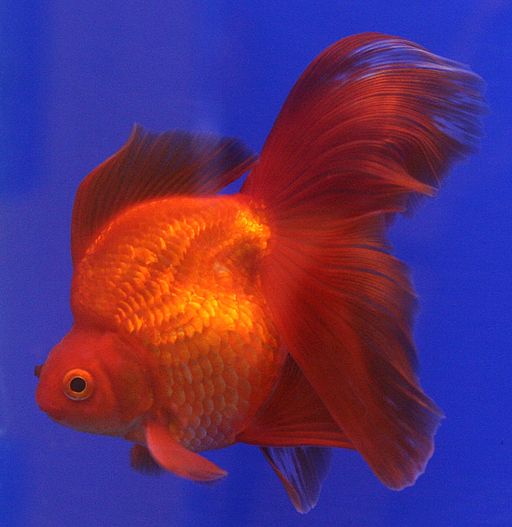
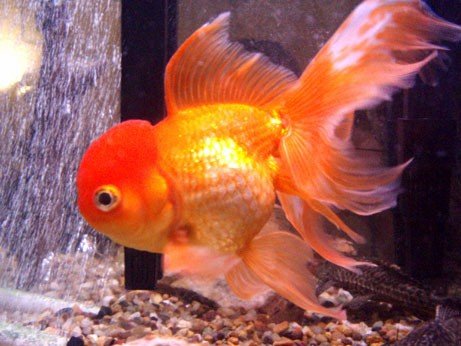

I’ll never look at another goldfish the same again, man these species have been through a lot. Think I might go add a few to my tank just cause.
I never knew the history of the pet goldfish. This was very interesting, especially the part about people in the west thinking that the people in the east kept them in small bowls, but in reality it was just a temporary thing to impress the guests. I also had no idea that a goldfish could live that long! I hope people realize they can’t be kept in a small bowl. I wonder how long they live in a small bowl like that. This reminded me of beta fish. I had a friend who had one in a small bowl for months.
I didn’t know that the goldfish’s golden color was actually a mutation to begin with. The gray fish is a stark contrast to these bright orange fish we see today. I have always wanted a telescope eyed one. My first memory of goldfish was when I used to eat at a Chinese restaurant. They had beautiful goldfish, and I think most of them were the fancy variety,
The telescope eye goldfish are ones are my favorites. My local Thai restaurant has them in their tanks.
Wow so the Prussian carp is basically like the first goldfish lol.
Used to make me sad when I saw these lil guys in plastic bags at the fair. I always hoped they went to good homes, and somewhere that they actually put oxygen in the tank!
Yeah I hope they stopped giving fish out as prizes.
I still find goldfish to be beautiful and special. They’re my favorite fish to keep, mainly because of their easy upkeep and behavior.
Pearlscale goldfish are my favorite. Thanks for bringing attention to this humble fish.
I knew goldfish originated somewhere east, but had no idea they were from the prussian carp! This makes me curious about other species of fish and their origins.
I love the goldfish with the bulging heads. And the googly looking eyes! Kinda sad though that the fancy goldfish suffer issues due to their breeding.
got 2 lil goldies as my first fish when I was 12. pretty much loved keeping fish since.
I like the helpful info you provide in your articles. I will bookmark your blog
and take a look at once more here frequently.
I’m moderately certain I will learn many new stuff right right here!
Best of luck for the following!
Hi there! This post couldn’t be written any better!
Looking through this post reminds me of my previous roommate!
He always kept preaching about this. I’ll forward this information to him.
Fairly certain he will have a good read. Thank
you for sharing!